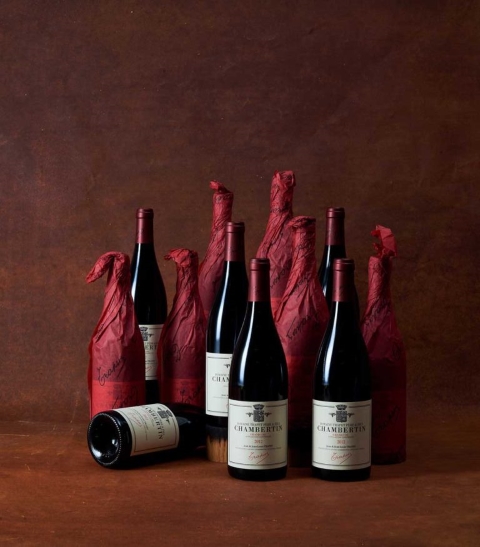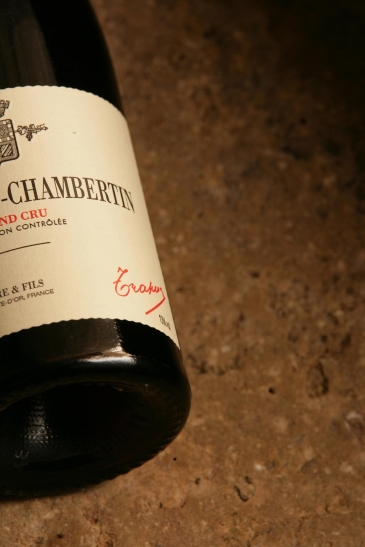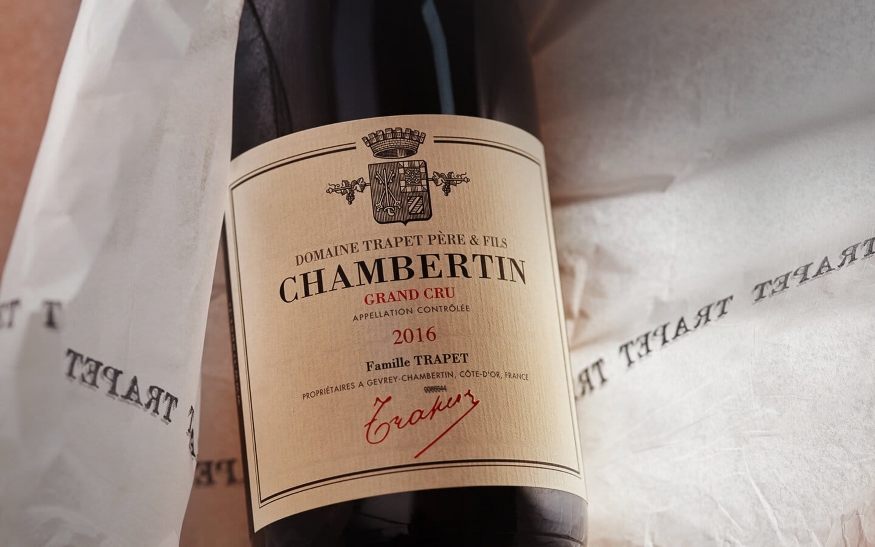
COUNTRY
France

REGION

GRAPE VARIETY
Pinot Noir

VINTAGE
2020
AVAILABLE STOCK: 9 BOTTLES

COUNTRY
France

REGION

GRAPE VARIETY
Pinot Noir

VINTAGE
2020
Country: France, Burgundy, Gevrey Chambertin
AWARDS
Jasper Morris - Inside Burgundy: 92-95/100
La Revue du Vin de France: 17/20
The Derée Champérier vineyard was purchased by the Trapet family in 1859. After 160 uninterrupted years of farming this terroir, current generation Pierre & Louis wanted to make a cuvee as an hommage to the many generations of Trapet vignerons that have come before them. Thanks to its purity and terroir transparency, they felt the 2019 vintage was the perfect moment to produce the Cuvee 1859. From 50-year-old vines in the parcel of Derée Champérier in Brochon in the northern part of Gevrey.
Manual harvest and sorting. Natural vinification is always very precise: delicate crushing of the bunches, indigenous yeasts, no additives or sulphur, and transfer of the juices and wine by gravity. Long ageing in barrels.
Food Pairing: Pairs well with duck, goose and game birds
DOMAINE TRAPET
With vines in Burgundy and Alsace, Trapet Family aims to translate and pass on all the grape and terroir-expressions as the know-how has been passed down to them from generation to generation.
The Domaine was established by Louis`s son Arthur in 1870 when he began acquiring vineyards and laying the foundations for the present Domaine. The Trapets now have 12 hectares of vines including 1.9 hectares of the hallowed Chambertin.
The Domaine is currently run by Jean-Louis Trapet, son of Jean and cousin of the Rossignol Trapets. He is married to an Alsacienne, Andrée. Jean-Louis moved towards biodynamic farming in the mid-1990s, working first with guru Francois Bouchet and now with Pierre Masson. The Domaine has been certified by Biodivin since 1998 also, he uses no sulphur at harvest or during the vinification and maturation processes, just adding a small dose at bottling.

SHIPPING FEES
For orders €100,00 and
above we deliver free to
your place
For orders below €100,00 delivery
charge €10,00 within city limits.
Country: France, Burgundy, Gevrey Chambertin
AWARDS
Jasper Morris - Inside Burgundy: 92-95/100
La Revue du Vin de France: 17/20
The Derée Champérier vineyard was purchased by the Trapet family in 1859. After 160 uninterrupted years of farming this terroir, current generation Pierre & Louis wanted to make a cuvee as an hommage to the many generations of Trapet vignerons that have come before them. Thanks to its purity and terroir transparency, they felt the 2019 vintage was the perfect moment to produce the Cuvee 1859. From 50-year-old vines in the parcel of Derée Champérier in Brochon in the northern part of Gevrey.
Manual harvest and sorting. Natural vinification is always very precise: delicate crushing of the bunches, indigenous yeasts, no additives or sulphur, and transfer of the juices and wine by gravity. Long ageing in barrels.
Food Pairing: Pairs well with duck, goose and game birds
DOMAINE TRAPET
With vines in Burgundy and Alsace, Trapet Family aims to translate and pass on all the grape and terroir-expressions as the know-how has been passed down to them from generation to generation.
The Domaine was established by Louis`s son Arthur in 1870 when he began acquiring vineyards and laying the foundations for the present Domaine. The Trapets now have 12 hectares of vines including 1.9 hectares of the hallowed Chambertin.
The Domaine is currently run by Jean-Louis Trapet, son of Jean and cousin of the Rossignol Trapets. He is married to an Alsacienne, Andrée. Jean-Louis moved towards biodynamic farming in the mid-1990s, working first with guru Francois Bouchet and now with Pierre Masson. The Domaine has been certified by Biodivin since 1998 also, he uses no sulphur at harvest or during the vinification and maturation processes, just adding a small dose at bottling.

SHIPPING FEES
For orders €100,00 and
above we deliver free to
your place
For orders below €100,00 delivery
charge €10,00 within city limits.














